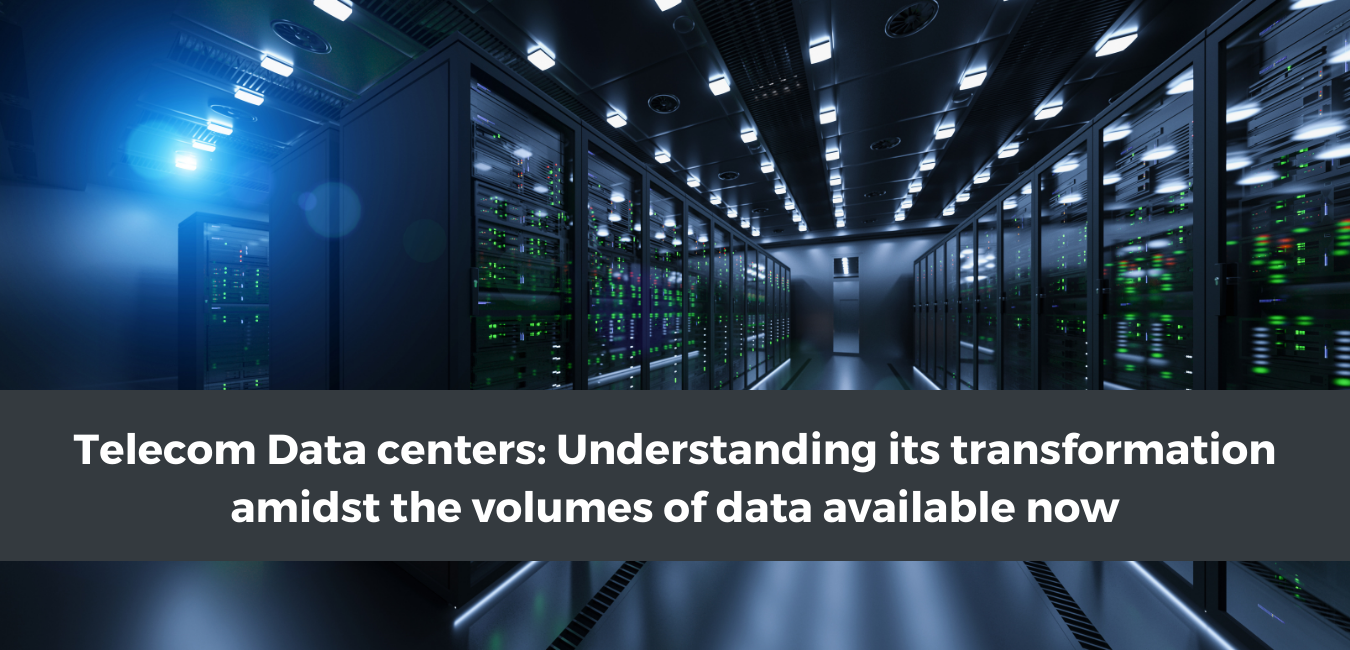Telecom Data Centers: Understanding its transformation amidst the volumes of data available now

"We need to transform ourselves proactively to meet the new market requirements. Cloud native architecture is necessary to achieve our business goals and positive outcomes for our customers. The technology transformation will increase our business agility, reduce cost and help us deliver differentiated service experiences. Rearchitecting our data centers is the pivot of this transformation journey." Hendri Mulya Syam CTO, Telkomsel
Previously, data centers were more like mysterious ghosts running around in the back of telecom buildings. Many providers chose to build and manage their data centers. But at the same time, a few of them outsourced their IT environment to a third party. However, data centers have evolved to support innovations and technological advancements.
It won't be wrong to say the telecommunication industry is evolving to cater to massive data processing and lower latency needs after introducing technologies like 5G, IoT, virtual and augmented reality, AI, and ML. So, just like telecom, the data centers are also going through a significant transformation now.
But what's the data center in the telecom? Let's get a brief idea about it!
Datacenter in telecoms: The definition
Honestly, there is no difference between the data centers used by Google, Cloud, Amazon, AWS. However, that's only in theory. Data is data. But the ones used by telecom providers require more than just normal information storage set up. The primary function of the data center is to drive content delivery using mobile and cloud services. This requires better connectivity. This helps companies to drive another source of revenue stream.
Quite evidently, the behavior and perspectives are changing- for the better. Let's look closer at what's happening. Now let’s talk about the transformation and how it is beneficial.
Building the architecture for the future: Telecom data center
The telecom providers are in the middle of digital transformation. And to stay in the competitive landscape, introducing new technologies is becoming a need more than an option. Further, the changing landscape is making it even more competitive. Clearly, most things have changed over the past few decades. But what's changing?
The physical devices are changing
Traditional telecom data centers were usually on-premises and primarily used to support telecom functions. The industry providers used monolithic servers for this. However, now the servers are coupled with different hardware. But it is now moving to virtualization platforms to overcome this HW dependency.
For instance, NFV is one such big change that will help telecom providers get away from the hardware platforms' dependence on lower-cost, general-purpose servers. According to research, more than 50% of operators offer better services through flexibility and agility. Thus, it allows them to market their products at a faster rate. Virtualization and cloudification will enable the providers to offer better services and networks using the new platforms.
The use of SDN will further manage the complicated data center environment. There is a promise of automation, simplifying the service and delivery. This will drive more and better connectivity. Also, the new technologies will drive requirements for better service offerings in terms of flexible and personalized outputs. One can expect taking care of a diverse range of servers, switches, and applications like safety and data center load balancing,
The idea is to use these technologies like NFV and SDN. The telecom operators can reduce operational expenses and deliver services most affordably. This will be for future success.
Adopting cloud for better offers:
You can stay away from scalability if you want to reach more audiences. And the cloud helps to deliver such benefits to the telecom industry. It gives the industry some dynamic resource pools and infrastructure scaling opportunities.
The cloud options will help the operators to facilitate the integration. For instance, Google, Cloud, AWS, and Azure are public cloud players. This will allow them to maintain data and be competitive simultaneously.
For example, Verizon acquired a data center provider Terremark in 2011 for billions of dollars, and later they decided to sell it off to Equinix for around $3.5 billion. The impact of cloud players isn't only on businesses but also operations.
Even hybrid clouds are coming into the market to develop trust. Many big players like Orange France are already into partnerships with these cloud providers to scale their development.
Also, with the high volume of data because of streaming services, collaborating with cloud providers will only scale their services and revenue streams. Further, hybrid clouds will help modernize on-premises data centers. Since one can maintain them easily without costing much, it is helping with workload migration as well. Thus, making the providers more agile.
5G will add more dimension to the needs of telecom data centers
With the emergence of 5G, the data volume and processing speed needs are increasing exponentially. Edge computing will play a significant role in 5G to low latency use-cases, like cloud gaming and anonymous vehicles. It won't be wrong to say that it is a brave new world for the telecom data center.
Final Thoughts: The path to making an agile data center for the future.
Data centers ate quite a strategic asset of the telecom industry. However, they have to process enormous volumes of data. Thus, making it quite hectic and troublesome for the operators to scale and grow. Also, with so many changes in the consumer and business landscapes, you need to work rapidly with the data revolution. The first-generation networks can’t cope with the changes and innovations of today. This is why adopting new options is very important.
So, where are we heading? To stay in the game, one needs to quickly build their distributed networks and micro data centers to meet consumers' and enterprises' demands. After all, innovations won’t stop. But if you are not ready to be an early adopter, it won’t help you scale. However, the key is collaboration here. You need to enter into brokerage partnerships to achieve your bottom line. So, are you all set to be the “new you?” or is it still a new world? Let us help you make an informed decision.








